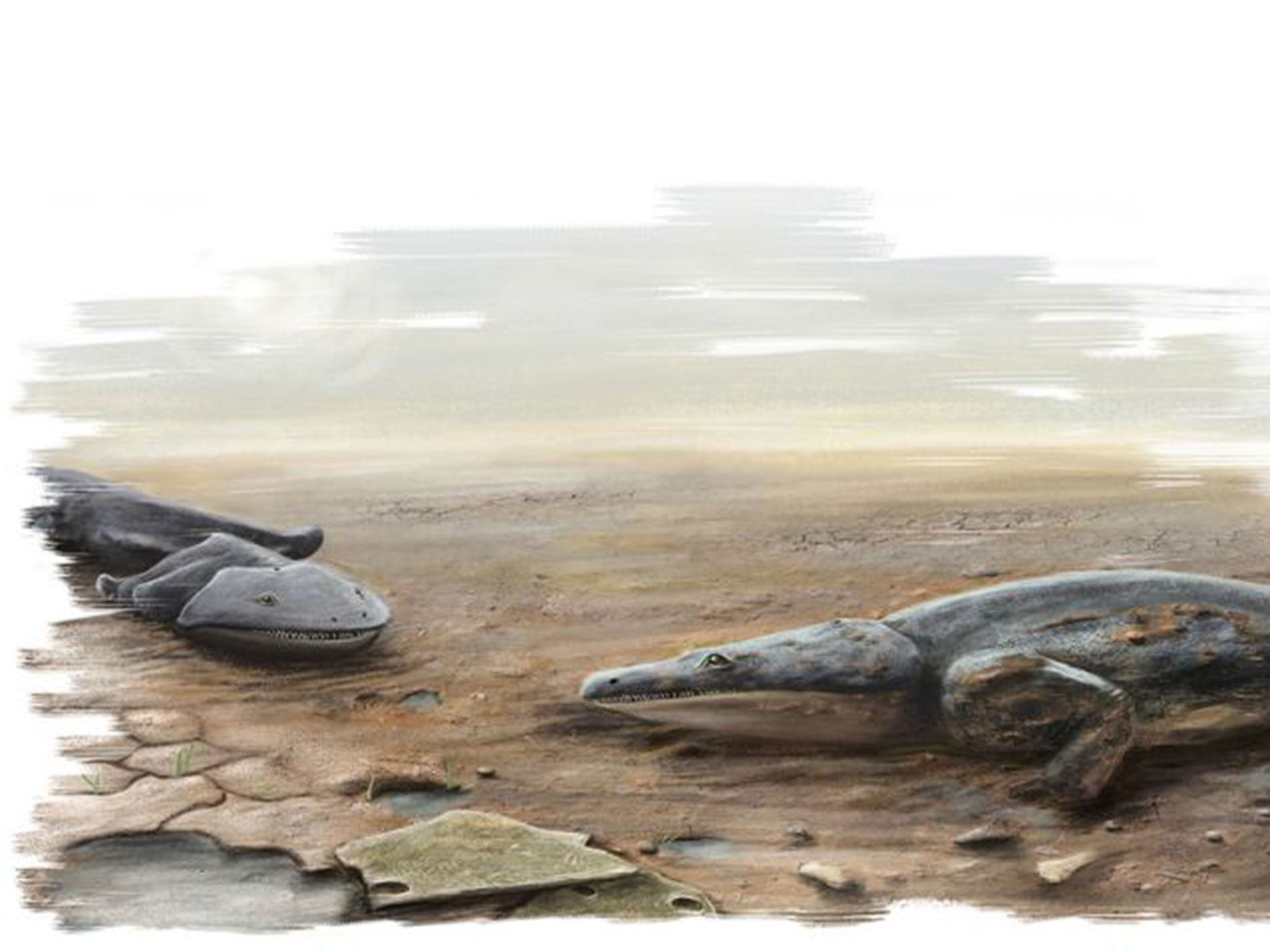Super Salamander: Bones of 'toilet seat-headed' predator that attacked dinosaurs discovered
The creature walked the earth over 200 million years ago and was discovered on the site of an ancient lake in southern Portugal

Your support helps us to tell the story
From reproductive rights to climate change to Big Tech, The Independent is on the ground when the story is developing. Whether it's investigating the financials of Elon Musk's pro-Trump PAC or producing our latest documentary, 'The A Word', which shines a light on the American women fighting for reproductive rights, we know how important it is to parse out the facts from the messaging.
At such a critical moment in US history, we need reporters on the ground. Your donation allows us to keep sending journalists to speak to both sides of the story.
The Independent is trusted by Americans across the entire political spectrum. And unlike many other quality news outlets, we choose not to lock Americans out of our reporting and analysis with paywalls. We believe quality journalism should be available to everyone, paid for by those who can afford it.
Your support makes all the difference.The remains of a “super salamander” thought to be the size of a car and one of the Earth’s top predators 230 million years ago have been discovered in Portugal.
The previously undiscovered species, which is said to be a distant relative of today's salamander species, was found by scientists among a bed of bones on the site of an ancient lake in southern Portugal.
The creature that has been given the name Metoposaurus algarvensis, measured 2 metres in length and fed mostly on fish and other prehistoric creatures.
Dr Brusatte said: ”It was the type of fierce predator that the very first dinosaurs had to put up with if they strayed too close to the water, long before the glory days of T-rex and Brachiosaurus.“
It existed during the late Triassic period, the time in which dinosaurs began to appear across Pangaea, the supercontinent, which was made up of every one of today’s continents.
With only a fraction of the site having been dug so far, it is hoped that more new discoveries can come to light in the coming months.
Subscribe to Independent Premium to bookmark this article
Want to bookmark your favourite articles and stories to read or reference later? Start your Independent Premium subscription today.
Join our commenting forum
Join thought-provoking conversations, follow other Independent readers and see their replies
Comments